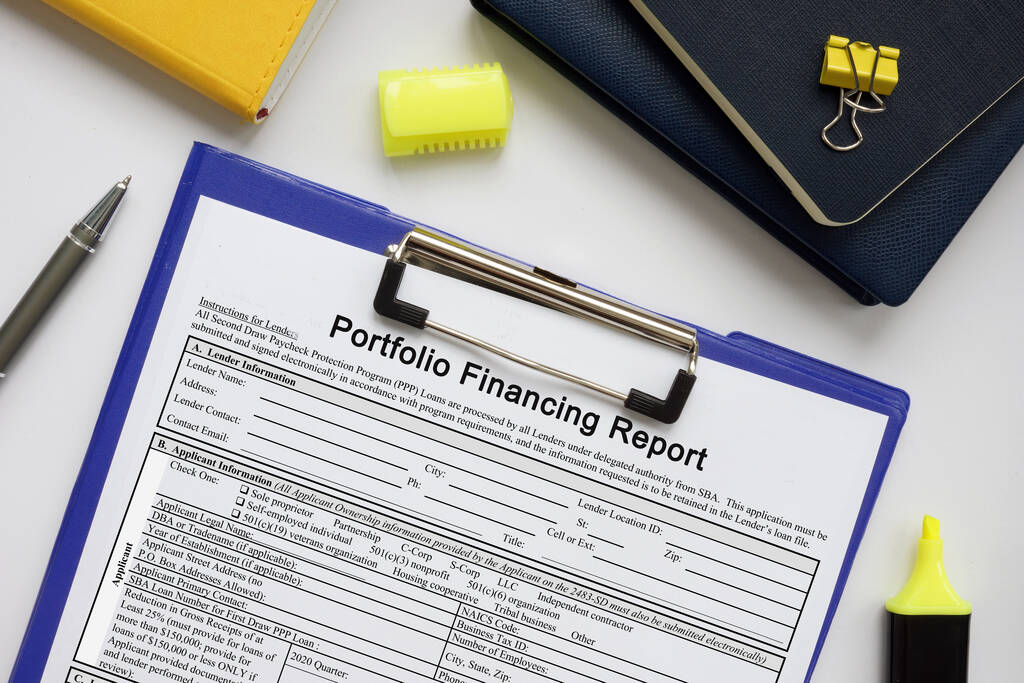Unlocking Real Estate Wealth: Understanding the BRRRR Strategy
If you’re diving into the world of real estate investment, you may have come across the intriguing acronym “BRRRR.” It’s not just the chilly sound you make when it’s freezing outside; it’s a powerful real estate investment strategy. In this blog post, we’ll break down the meaning of BRRRR, provide an example, and discuss its potential disadvantages.

What is the Meaning of BRRRR?
BRRRR stands for Buy, Rehab, Rent, Refinance, Repeat. It’s a real estate investment strategy that has gained popularity for its potential to create wealth through property acquisition and renovation. Let’s explore each of these steps in more detail:
Buy: The first step is to purchase a property, typically at a below-market value price. Investors often look for distressed or undervalued properties.
Rehab: After acquiring the property, investors renovate or rehabilitate it to increase its value. This step involves making necessary repairs and improvements.
Rent: Once the property is in good condition, it’s rented out to tenants. Rental income is a crucial part of the BRRRR strategy, as it provides ongoing cash flow.
Refinance: After the property is renovated and rented, investors can refinance it. This involves taking out a new mortgage loan based on the increased value of the property. The goal is to pull out the initial investment capital or a substantial portion of it.
Repeat: With the capital returned from the refinance, investors can repeat the process by acquiring and rehabilitating another property. This cycle continues to build wealth over time.
What is an Example of BRRRR?
Let’s illustrate the BRRRR strategy with a hypothetical example:
Imagine you purchase a run-down property for $80,000, well below its market value, and invest $20,000 in renovations to make it more appealing. After the renovations, the property’s appraised value increased to $120,000. You decide to rent it out for $1,200 per month.
Once the property is rented and stabilized, you refinance it with a new mortgage loan based on the appraised value of $120,000. Let’s say you’re able to secure a loan for 75% of the appraised value, which amounts to $90,000. With this refinance, you not only recover your initial $100,000 investment (purchase price plus renovations) but also have an additional $10,000 to use for your next investment. You’ve successfully executed the BRRRR strategy.
What are the Disadvantages of BRRRR?
While the BRRRR strategy offers numerous benefits, such as building wealth and generating passive income, it’s essential to be aware of potential disadvantages:
Market Volatility: Real estate markets can be unpredictable. Property values may not always appreciate as expected, which could affect your refinancing plans.
High Initial Capital: BRRRR typically requires a significant amount of capital to purchase and renovate properties. If you don’t have access to sufficient funds, it may not be the right strategy for you.
Management Challenges: Managing rental properties can be time-consuming and comes with its own set of challenges, including tenant issues and property maintenance.
Risks of Over-Leveraging: Refinancing properties to pull out capital can lead to over-leveraging if not done carefully. High levels of debt can be risky if market conditions change unfavorably.

The BRRRR strategy can be a powerful tool for building wealth through real estate investment, but it’s not without its risks and challenges. Understanding the process, conducting thorough research, and carefully evaluating each investment opportunity are essential steps to success. As with any investment strategy, it’s advisable to seek guidance from experienced professionals and be prepared for both the rewards and potential pitfalls that come with BRRRR.
Learn more at Wiki as well.
Exploring the Power of Short-Term Business Loans: A Comprehensive Guide
In the dynamic world of business, financial flexibility is often the key to success. Short-term business loans, commonly known as STR loans, have emerged as valuable tools for entrepreneurs seeking swift access to capital. In this blog post, we’ll delve into the ins and outs of short-term loans, their purpose, real-world examples, and the various types available for businesses.

What is a Short-Term Loan?
A short-term loan is a financial arrangement designed to provide businesses with quick access to capital for a limited duration. Unlike long-term loans that are repaid over several years, short-term loans are typically repaid within a shorter timeframe, often ranging from a few months to a year. These loans offer an infusion of funds that can be utilized for various business needs, from managing cash flow gaps to seizing growth opportunities.
Purpose of a Short-Term Loan
The primary purpose of a short-term loan is to address immediate financial needs that arise while running a business. These loans can serve a multitude of purposes, such as:
Working Capital: Short-term loans can help businesses cover operational expenses, payroll, and day-to-day overhead costs.
Seasonal Fluctuations: Businesses that experience seasonal variations in demand can use short-term loans to bridge revenue gaps during off-peak periods.
Inventory Management: A short-term loan can be used to stock up on inventory ahead of a busy season or take advantage of bulk purchase discounts.
Emergency Expenses: In case of unexpected emergencies, such as equipment breakdowns or sudden market shifts, a short-term loan can provide a safety net.
Example of a Short-Term Loan
Imagine a small retail business gearing up for the holiday season. They anticipate a surge in demand but lack the upfront capital to purchase additional inventory. To ensure they’re well-stocked and ready to meet customer demands, they secure a short-term loan. After the holiday rush, the business uses its increased revenue to repay the loan, effectively leveraging the loan to maximize profits during a specific period.
Types of Short-Term Business Loans
There are several types of short-term business loans tailored to various financial needs. Some common options include:
Line of Credit: A line of credit provides businesses with access to a predetermined amount of capital. Interest is only paid on the amount borrowed, making it a flexible option for covering unexpected expenses.
Merchant Cash Advance: This option allows businesses to receive a lump sum in exchange for a percentage of future credit card sales. Repayments are automatically deducted from daily transactions.
Invoice Financing: Businesses can leverage their outstanding invoices to secure a loan. Lenders provide an advance based on the value of the invoices, and repayment is made when customers settle their bills.
Short-Term Installment Loan: Similar to traditional loans, short-term installment loans involve borrowing a fixed amount and repaying it in regular installments over a shorter period.

Short-term business loans are versatile financial tools that empower businesses to navigate various economic challenges. From managing cash flow fluctuations to capitalizing on growth opportunities, these loans provide the agility and flexibility needed in the fast-paced world of entrepreneurship. By understanding what short-term loans are, their purpose, real-world examples, and the types available, businesses can make informed decisions to fuel their growth and success.
Learn more at Wiki as well.
Understanding DSCR Loans: What You Need to Know
Understanding vital financial metrics is essential when securing a loan for your business or real estate investment. Debt Service Coverage Ratio (DSCR) is a crucial metric that lenders often use to evaluate your loan eligibility. In this blog post, we will delve into the concept of DSCR in loans, compare it to the Debt-to-Income Ratio (DTI), explore the minimum DSCR requirements for loan approval, and discover the maximum loan amount that can be obtained using DSCR.

What is DSCR in a Loan?
Debt Service Coverage Ratio (DSCR) is a financial metric that indicates a borrower’s ability to service their debt obligations. It is calculated by dividing the Net Operating Income (NOI) by the total debt service, which includes principal and interest payments on the loan. The formula for DSCR is:
DSCR = Net Operating Income / Total Debt Service
A DSCR more significant than 1 indicates that the borrower’s income is sufficient to cover their debt obligations, while a DSCR less than 1 signifies a potential risk of default. Lenders use this ratio to assess the borrower’s capacity to repay the loan comfortably.
Is DSCR the Same as DTI (Debt-to-Income Ratio)?
While DSCR and DTI measure a borrower’s ability to handle debt, they do so in different contexts. DSCR focuses on evaluating the financial viability of an income-generating property or business. On the other hand, DTI assesses an individual’s or household’s ability to manage their debt based on personal income and expenses.
DSCR is generally employed in commercial real estate or business loan scenarios, whereas DTI is more common in assessing mortgage applications or personal loans. Lenders use DTI to gauge the percentage of a borrower’s income that goes towards debt payments. At the same time, DSCR analyzes the cash flow generated by a property or business to cover debt.
What is the Minimum DSCR for a Loan?
The minimum DSCR requirement for loan approval can vary depending on the type of loan and the lender’s risk appetite. Generally, lenders prefer a DSCR of at least 1.25 to 1.35 for commercial real estate loans. The property’s income should be 1.25 to 1.35 times higher than the total debt service.
However, keep in mind that different lenders may have other DSCR criteria based on the perceived risk of the loan. For riskier ventures, such as startups or properties with uncertain cash flows, lenders may demand a higher DSCR to minimize their exposure to potential default.
What is the Max Loan Amount Using DSCR?
The maximum loan amount obtained using DSCR is determined by the property’s or business’s cash flow. Lenders typically use a loan constant or a predetermined DSCR ratio to calculate the maximum loan amount. The loan constant is the ratio of the annual debt service to the original loan amount, and it helps determine the highest loan amount a property can support based on its cash flow.
For example, if the loan constant is set at 0.08, a property generating $100,000 in NOI can support a loan of $1,250,000 (Loan Amount = Net Operating Income / Loan Constant).

Understanding DSCR is crucial when seeking a loan for your business or real estate ventures. It provides valuable insight into your ability to manage debt and gives lenders confidence in your loan application. Remember that DSCR and DTI serve different purposes, and the minimum DSCR requirements can vary among lenders. By being aware of these factors, you can better prepare yourself for a successful loan application and secure the financing you need for your entrepreneurial pursuits.
Learn more at Wiki as well.
Mastering Real Estate Investment: Exploring the BRRRR Method
Are you an aspiring real estate investor looking for a strategic approach to maximize your returns? If so, the BRRRR method might be the key to your success.

In this article, we’ll dive into the BRRRR method, explore an example of how it works, and shed light on its potential disadvantages.
What is the BRRRR Method?
The BRRRR method, which stands for Buy, Rehab, Rent, Refinance, Repeat, is a real estate investment strategy designed to help investors build wealth systematically. This method allows investors to recycle their capital and amplify their returns by acquiring properties, adding value through renovations, renting them out, refinancing to pull out invested capital, and then repeating the process with the newly acquired funds.
Example of the BRRRR Method:
Let’s walk through a simplified example of how the BRRRR method works:
Buy: You purchase a distressed property for $80,000.
Rehab: You invest $20,000 in renovations to increase the property’s value.
Rent: After the renovations, you rent the property for $1,200 monthly.
Refinance: The property’s value has increased to $130,000 due to the renovations and rental income. You refinance the property and pull out 75% of its value, which is $97,500.
Repeat: With the refinanced amount, you can use it as a down payment to acquire another property, and the cycle continues.
This process allows you to generate rental income, create equity through appreciation, and build a portfolio of income-producing properties over time.
Disadvantages of the BRRRR Method:
While the BRRRR method offers compelling benefits, it’s essential to be aware of its potential disadvantages:
Capital Requirement: The initial investment for buying, rehabbing, and renting a property can be significant. This could limit accessibility to the strategy for investors with limited funds.
Market Volatility: Real estate markets can experience property values and rental demand fluctuations. Economic downturns can affect rental income and property valuations, impacting your expected returns.
Time and Effort: The BRRRR method requires active involvement in property selection, renovations, tenant management, and refinancing. It can be time-consuming and demands a hands-on approach.
Financing Challenges: Finding suitable lenders for refinancing can be challenging, especially if the property needs substantial rehabilitation work or if you’re acquiring multiple properties simultaneously.
Property Selection: Choosing the right property at the right location is crucial for the success of the BRRRR method. A poor property choice could lead to lower rental income and difficulty in refinancing.

In conclusion, the BRRRR method is a powerful strategy for real estate investors aiming to build wealth through a systematic approach. By understanding its steps, benefits, and potential drawbacks, you can make informed decisions and tailor the method to your investment goals and risk tolerance. As with any investment strategy, thorough research, due diligence, and a clear understanding of your financial capabilities are essential for success.
Learn more at Wiki as well.
The BRRRR Method: A Comprehensive Guide to Building Wealth Through Real Estate
Real estate has long been considered a reliable avenue for building wealth. However, many individuals are hesitant to enter the market due to the significant financial investment required. Enter the BRRRR method – an innovative strategy that enables aspiring real estate investors to generate profits and build wealth with minimal upfront capital. BRRRR stands for Buy, Rehab, Rent, Refinance, and Repeat, and it has gained popularity for its potential to create a continuous cycle of real estate investments.

In this article, we will delve into the BRRRR method, explore its key principles, and outline the step-by-step process to successfully implement this strategy.
- Buy: The first step of the BRRRR method is to identify and purchase an undervalued property. This involves conducting thorough market research, analyzing property values, and seeking opportunities aligning with your investment goals. The goal is to acquire the property at a price that allows for substantial equity once renovations are completed. Diligence in property selection is crucial to ensure a profitable outcome in subsequent steps.
- Rehab: Once the property is acquired, the second step involves renovating or rehabilitating it to increase its value. This may include repairs, upgrades, and cosmetic enhancements that will make the property more attractive to potential renters or buyers. It is essential to strike a balance between the renovation costs and the expected increase in property value. Careful budgeting and efficient project management are essential to maximize returns on investment during this phase.
- Ren: After the property has been rehabbed, the next step is to find suitable tenants and generate rental income. Effective marketing, tenant screening, and lease agreements are critical in ensuring a smooth rental process. Adequate property management is necessary to maintain the property, address tenant concerns, and collect rental payments promptly. A well-managed rental property generates steady cash flow and adds value to the overall investment.
- Refinance: Once the property is rented and generating income, the next step in the BRRRR method is to refinance the property. The objective here is to leverage the increased property value, the equity gained through renovations, and the rental income history to secure a new loan that covers the initial investment and rehab expenses. By refinancing, investors can potentially pull out a substantial portion of their initial investment and redeploy it into another property, effectively recycling their capital.
- Repeat: The final step in the BRRRR method is to repeat the process with the refinanced capital. By reinvesting the funds into another property, investors can continue the cycle, accumulating more properties and increasing their real estate portfolio. The key to success lies in meticulously repeating each step, and maintaining discipline in property selection, rehabbing, renting, and refinancing. With every iteration, investors can generate more cash flow, build equity, and expand their investment portfolio.

The BRRRR method has revolutionized the real estate investment landscape by providing a systematic approach to building wealth with limited upfront capital. By following the steps of Buy, Rehab, Rent, Refinance, and Repeat, investors can unlock the potential of real estate, generating cash flow, increasing equity, and expanding their investment portfolio. However, it is important to note that the BRRRR method requires careful planning, market analysis, and diligent execution. As with any investment strategy, thorough research, professional guidance, and a long-term perspective are vital for success. With the BRRRR method, aspiring real estate investors can embark on a journey toward financial independence and wealth creation through the power of real estate.
Learn more at Wiki as well.











